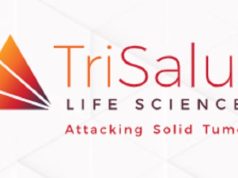Encouraging results from Y90 (yttrium-90) radioembolization of pancreatic cancer support a possible role for it in the management of the disease, with initial small scale studies suggesting it provokes a disease response; however, the benefits may vary for different patient subgroups.
Although evidence is still limited, Alexander Kim, chief of Vascular and Interventional Radiology at Medstar Georgetown University Hospital (Washington DC, USA), said: “The data suggest that we can get promising disease response with radioembolization, with response rates from 20–40% in various groups. Patient selection, obviously, is key.” He was speaking at the Spectrum conference (1–4 November, Miami, USA), outlining a possible role for Y90 in the management of pancreatic cancer metastasis.
In 2018, 55,440 new cases of pancreatic cancer were diagnosed, with 44,330 deaths. The five-year survival is 8.5%, dropping to 2.7% in patients with distant metastases. The current standard of care, drug regimens of either FOLFIRINOX or gemcitabine abraxane, has shown an overall survival of about eight to 11 months in trials.
Kim explained the rationale for adding Y90 radioembolization to standard chemotherapy treatment: “Overall, there is a poor prognosis for these patients, so there is a need to find different treatments that may potentially augment survival in a subgroup of these patients. And, there are data that show that liver metastases are a negative independent prognostic factor of survival, causing death in about 50% of these patients.” The radiosensitivity of pancreatic adenocarcinoma suggests Y90 could provide an alternative option.
But there have been very few studies looking at its efficacy; Kim assessed the small number available. The largest study, of 19 patients, was from Germany: “Response rates in the liver are pretty impressive, with about nine of the patients showing a partial response to treatment, and overall survival of nine months from the time of radioembolization, and 19 months from initial diagnosis.”
He also told delegates about the findings from his own study of 16 patients, in which Y90 radioembolization was incorporated into systemic therapy, describing the treatment strategy as “a little unique”.
“We strategised to incorporate Y90 into systemic treatment. We treated those patients with half dose gemcitabine in the cycle prior to radioembolization, then performed whole liver radioembolization for patients, but then gave them a half dose again for the following chemotherapy cycle, and then they went back to a regular dose of systemic treatment.” Overall survival from time of diagnosis was 22 months, and from time of radioembolisation was 12.5 months.
His group have also recently completed a multicentre retrospective study of 33 patients, published in the March issue of Journal of Vascular and Interventional Radiology. It recorded a disease control rate of 81%, and disease response in 42% of patients. The median overall survival from the time of Y90 radioembolization was 8.1 months (95% CI 4.8–12.5), with a median overall survival from diagnosis of 20.8 months (95% CI 14.2–29). “Our toxicity levels were pretty mild, with three patients having Grade III toxicities, and no grade IV or V toxicities in the 33 patients.”
Only one prospective study has been conducted: an open label, phase II, two-centre trial in Australia, which was published in 2015. “The primary objective was to assess progression free survival in the liver. They enrolled 15 patients in the study, everyone had bilobar liver disease. They received whole liver treatment in a lobar fashion using resin Y90. The tumour response rates were generally pretty impressive. You can see the change in CA 19-9 levels decreasing pretty dramatically for the majority of these patients.”
Progression free survival was 5.2 months for the liver, and 4.4 months at any site. But overall survival was only 5.5 months, raising the question, Kim said, of “whether radioembolization actually benefits in the frontline setting. The prospective phase II data would argue against incorporating Y90 in this patient population; the patients overall survival was really unchanged from standard survival that you would expect to see with gemicitabine based treatment.”
He stressed the importance of patient selection. At Georgetown, Kim and other researchers have incorporated Y90 as a consolidated treatment for particular groups of patients, including those who have been treated with frontline therapy for four to six months and have demonstrated good tumour biology.
“The second group we have treated are patients who have developed systemic toxicity with chemotherapy—generally patients who develop toxicity from gemcitabine, and they will either have to switch their regimen or titrate down on their dose. There is a concern that their liver disease will flare after the change in regimen, so we have started to incorporate Y90 for this patient population.”
He said Y90 treatment needed further assessment, including the Georgetown strategy of consolidation and maintenance, to see whether it leads to a survival benefit. And, he added, “there is a lot of interest in assessing the synergistic effect of radioembolization and immunotherapy. That is another area that needs more investigation in the pancreatic cancer patient population.”











